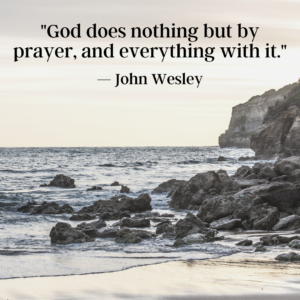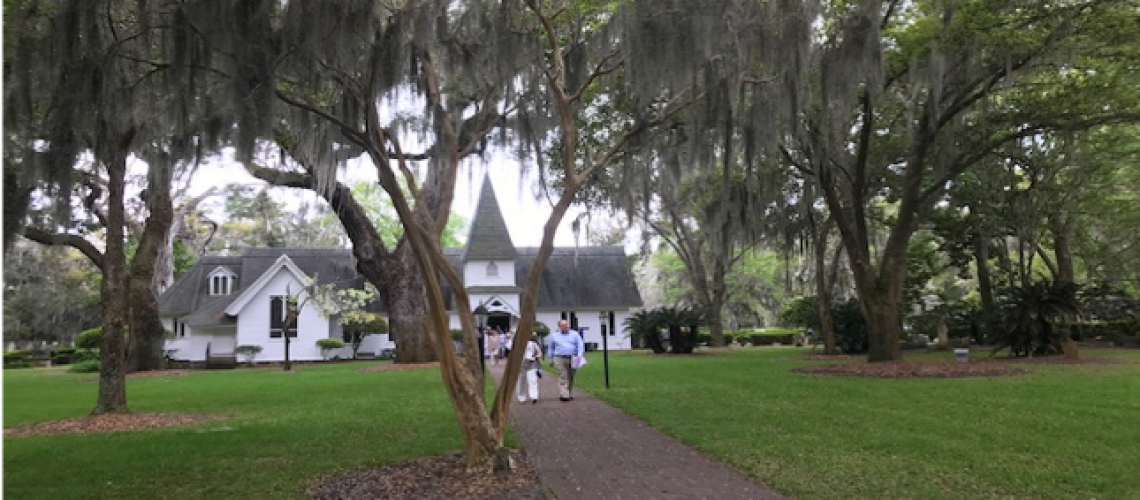Above is a picture of Christ Church, Frederica, Georgia. Originally, a mission of the Church of England, the Rev. Charles Wesley conducted the first services inside the walls of Fort Frederica in 1736. Later brother, John became the Rector. Of course, both Charles and John are known for their eventual formation of the Methodist Church, but March 3, is my reason for calling it to our attention as a day set aside in our liturgical calendar to celebrate the witness and the lives of both John and Charles Wesley.
Much could be written about these men. Their mother Susanna was no shrinking violet as she had a remarkable influence upon what was considered a holiness method of spiritual formation which in time became known as Methodist. No doubt, many are familiar with the hymns Charles wrote. The Episcopal hymnal is filled with his work and even though he wrote over 9,000 hymns he is still often referred to as the “forgotten Wesley!” He will however, always be remembered with hymns like, “Love Divine, All Loves Excelling” or “Hark! The Herald Angels Sing” as they along with countless other hymns are deeply embedded in the heart, mind, and worship for many of us.
John Wesley is the one who is known more as the preacher and organizer of church circuits and lay preachers who brought a spiritual fervor to the American colonies. In fact, when called home and disciplined by his Anglican bishop for his missionary fervor, Wesley simply replied “the world is my parish.”
Although Wesley was not trying to start a new denomination, his life of prayer and his change or transformation of faith taking him from the intellect of his head, to a more personal place in his heart, was compelling. He writes of unwillingly attending a prayer meeting on Aldersgate Street in London where he listened to a reading of Luther’s preface to the Epistle to the Romans about God working in the heart through faith in Christ. As he listened to this description of change, he felt his heart was “strangely warmed.” From this experience he is known for writing his “Covenant Prayer” which brought him to a place of holy obedience.
The prayer and the experience of John Wesley is not that far removed from studies of St. Paul and his experience of conversion. Granted, there are those who tend to instinctively draw back or shut-down with this discussion of conversion or transformation. Holding on to the status quo, or to the secure place of control, often prevents us from appreciating the witness of those who have gone before us. This great company of saints have much to teach, as we to learn.

When it comes to prayer, John, Charles, and Susanna Wesley have all taught me the importance of living prayer. In one sense, living prayer is the opposite of dead prayer. Dead prayer means prayer doesn’t work, it doesn’t function, it is of no use. Living prayer is the prayer of faith. It is the kind of prayer that opens a dialogue with God. It starts with letting God set the agenda for the day. And then the living prayer begins with what you and God plan on doing together. Try it. See if that doesn’t warm your heart.


12 thoughts on “Living Prayer”
Can’t believe you left out the fact that two St. Francis parishioners were married at Christ Church with you presiding, after having had to take off your golf shoes, roll your pants up and get in the water in order to hit your ball that was inches from the lake. Thankfully, the alligators were looking the other way…
Terrific lesson and blog. Thank you!
I didn’t bring it up because that’s where I almost learned about dead prayer! Thanks Dale for the reminder.
Robin. Mary and I are here inSt Simons and before COVID, attended Wesley United
Methodist which you know is across the street from Christ Church.
I hope that you and your Mary have had a chance to walk through the Wesley park that
connects the two churches.
The azaleas will be in full bloom soon and it is a wonderful place to reflect on the history
that has occurred in this area.
Blessings to you and Mary.
Jim
How great is that Jim. This brings it all home!
Robin,
At my age now, I feel a great need to connect with our Lord Jesus Christ in regular prayer.
Unfortunately, I don’t know how!
I look forward to your counsel.
As the early church father’s teach: “pray as you can, not as you can’t.” In other words, just get started. Look forward to catching-up.
There was a woman in Louisville who was invited to speak at a women’s group at First Christian Disciples of Christ across the street from St Francis. She had ten children whom she home schooled and it included religion. I wonder if her experience was similar to Susanna’s, discipline, chores, plus studies. In the study guide an older single man who was their neighbor recalls wondering how the parents could stand it but then he noticed that when the dad came home all the children streamed out of the house trilling “Daddy, Daddy!” in their high pitched voices and the neighbor wept because he finally understood the children weren’t a burden, they were a joy.
Beautiful Linda!
Love our visits to Christ Church! The Wesleys learned the Bible from their Mother in the Kitchen Club!
As we approach Mother’s Day–how about a “shout-out” to all the mother’s who are raising their children in Sunday school and lessons in the Bible.
When husband Samuel was away, as was often the case, a substitute minister brought the Sunday morning sermon at the church. Susanna found these messages uninspiring and lacking in spiritual meat. She had a good-sized congregation of her own at home, so she began teaching them the Bible in her kitchen on Sunday afternoons. Soon neighbors began asking if they could attend. Word circulated and others from the area began asking permission to attend as well. So thorough was Susanna’s knowledge of the Bible, and so gifted was she at communicating its truths, that on any given Sunday after church, Susanna would have as many as two hundred people in attendance at her informal family Bible study, which started in her home but soon moved to a larger venue
Mary, this is great! Thanks for adding this to the story of Susanna.